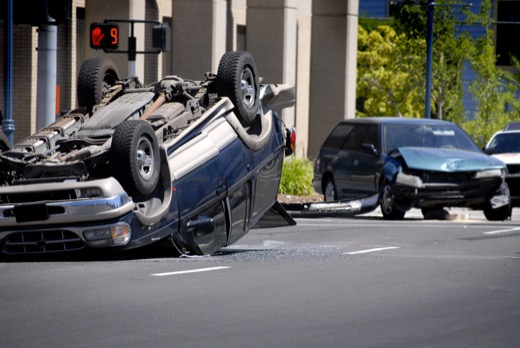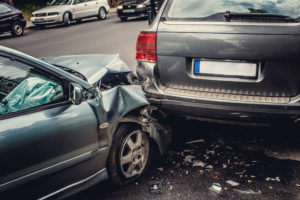Large vehicles offer safety benefits for their occupants, although they make the roads more dangerous for everyone else. According to researchers who studied the impact of large and small vehicle collisions, for every 1,000 pound difference in weight between the two vehicles colliding, the occupants of the smaller vehicle have a 47 percent increased chance of fatality. Risk of fatality for the occupants of the smaller vehicle is even greater if the larger vehicle is tall such as a “light truck” (pickup truck, SUV, or minivan). In fact, automobiles are larger now than they ever have been. The average vehicle weighed 4,009 pounds in 2010, compared to 3,221 in 1987. While this creates a large discrepancy between large SUVs and those driving smaller sedans, even larger vehicles are still at risk, especially taller autos with narrow wheelbases. In fact, larger, taller vehicles are at greater risk of rollovers, which can be some of the most traumatic and fatal types of collisions.
Tall Vehicles and Rollovers
Any vehicle can rollover if it is speeding excessively around a curve or under the wrong circumstances in a collision. However, taller vehicles with a high center of gravity are at even more risk. Due to their weight up high, and relatively narrow wheelbases, SUVs, pickup trucks, and cargo/passenger vans rollover easily when navigating curves at speed. In fact, passenger vans and similar large passenger vans are one of the most dangerous vehicles to drive due to the ease at which they rollover. When fully loaded, these vans are three times more likely to rollover during an emergency situation due to their high center of gravity and extended rear section behind the rear axle. Additionally, in 2013 the Insurance Institute for Highway Safety reported that 40 percent of SUV occupant fatalities were due to “Other (mostly rollover)” while that same “Other (mostly rollover)” category only made up 23 percent of car occupant fatalities.
Other Factors of Fatal or Serious Injury Rollovers
Vehicle make and model is not the only factor at play in terms of rollovers. According to the National Highway Traffic Safety Administration, 85 percent of fatal rollover crashes were single-vehicle incidences, meaning that no other vehicle was present. Furthermore, 90 percent of vehicles in single-vehicle rollovers were following standard driving maneuvers such as going straight or navigating a curve. This reveals that rollovers are often due to distraction and most likely speeding as well.
- Speed – 40 percent of fatal rollover crashes involve excessive speeding. And, the vast majority (almost 75 percent) of all fatal rollovers occur on roads with speed limits of 55 miles per hour or more.
- Alcohol – Almost half of all fatal rollovers involve alcohol intoxication. Alcohol may inhibit reaction time, impair safe decision making, induce drowsiness, and reduce vision.
- Rural Areas – Nearly three quarters of all fatal rollovers occur on rural roads with speed limits typically 55 miles an hour or higher. Rural roads are usually undivided, lack barriers and lighting at night, may possibly have rough road surfaces, and are frequently winding as opposed to a straight highway. Rural roads generally lack the same type of law enforcement, which can lead to excessive speeding as well.
If you or a loved one were injured in a rollover that was no fault of your own, the negligent party may owe you compensation. Contact the law offices of Ohio Car Accident Lawyers to speak with one of our experienced Cleveland, Ohio car accident attorneys today.





